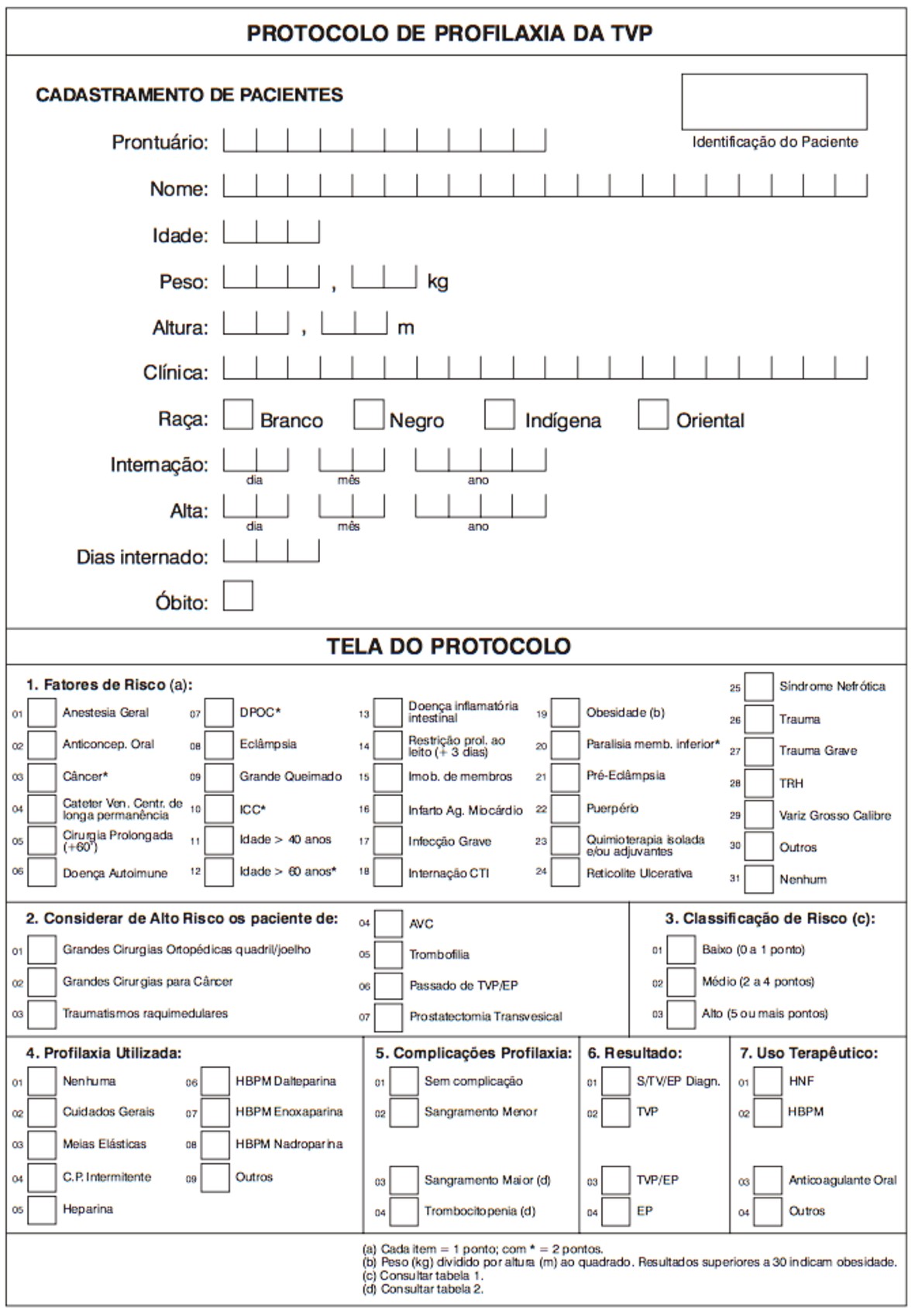Abstract
Background
Venous thromboembolism (VTE) is a silent and potentially lethal disease that affects a considerable proportion of hospitalized patients. It has high morbidity and mortality and is responsible for a heavy financial burden on healthcare systems. However, VTE can be prevented using prophylaxis measures that have been established in the literature. Nonetheless, in the real world, mean rates of appropriately administered VTE prophylaxis are lower than 50%.
Objectives
To define the epidemiological profile of patients with VTE in a University Hospital and the rate of appropriately administered VTE prophylaxis at that service and to identify measures to improve the rate.
Methods
A cross-sectional, observational study was conducted with data collected from the medical records of patients who met the inclusion criteria. The rates of correct VTE prophylaxis prescribed to clinical and surgical patients were compared, assessed according to guidelines published by the Brazilian Society of Angiology and Vascular Surgery (SBACV), based on VTE risk classification.
Results
The overall rate of correctly-prescribed VTE prophylaxis was 42.1%, while 57.9% of patients were not managed correctly in this respect. Clinical patients had a 52.9% rate of appropriate prophylaxis, while the equivalent rate for surgical patients was 37.5%.
Conclusions
Rates of correctly-prescribed VTE prophylaxis are still lower than they should be. Ongoing education, measures to encourage bedside risk stratification, and improvements to the electronic prescription system could increase appropriate VTE prophylaxis rates.
Keywords:
venous thromboembolism; venous thrombosis; emboli; thrombosis

 Thumbnail
Thumbnail
 Thumbnail
Thumbnail
 Thumbnail
Thumbnail
 Thumbnail
Thumbnail
 Thumbnail
Thumbnail




